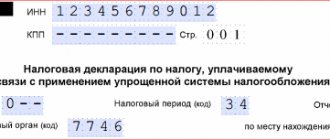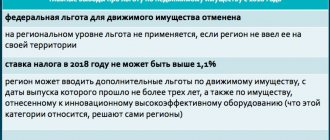Individual entrepreneur wants to pay less taxes
Artem makes and sells pottery, and also gives pottery lessons.
He works as an individual entrepreneur under the simplified tax system “income minus expenses”. Artem earns about 100,000 rubles per month, investing 30,000 rubles in materials and equipment. The state receives 15% tax on the difference between income and expenses - 10,500 rubles. Artem also has to pay about 4,500 ₽ in contributions per month, but they are completely covered by taxes. It turns out 59,500 ₽ net earnings.
Artem wants to save on taxes and try to combine individual entrepreneurs and self-employment.
Who can't take advantage of this opportunity?
Attention! By self-employment, the state understands generating income through one’s own labor.
Not everyone will be able to take advantage of this opportunity and pay NAP. There are a number of restrictions in the law. Let's look at the cases in which it is impossible to obtain self-employed status:
- Self-employed status cannot be obtained by resellers of goods; the sale of excisable goods and those requiring special labeling, as well as the extraction of mineral resources, are also prohibited.
- Self-employment cannot be used by lawyers, mediators, arbitration managers, and appraisers.
- Self-employment is not registered if there are employees. You can only attract temporary assistants under contract agreements.
- You cannot work in the interests of other persons under agency agreements, mandate agreements and commission agreements.
- Self-employment cannot be combined with other taxation systems.
- The new regime is not suitable for large businesses. Status cannot be obtained if annual income exceeds 2.4 million rubles.
- Registration has a territorial restriction. The law is in effect as an experiment, and the authorities are not yet ready to extend it to all residents of the country.
You cannot: Become self-employed and remain an individual entrepreneur in a different tax regime
Now Artem is an individual entrepreneur using the simplified tax system “income minus expenses.” This tax regime suits him because Artem receives 50,000 rubles per month from pottery and spends 30,000 rubles on materials. It turns out only 3000 ₽ tax on net profit.
The income from pottery lessons has increased, and it is now unprofitable to pay such a tax. For the last three months, Artem has been earning 50,000 rubles per month from training. There are no expenses here, but he is still forced to pay 15% in the “income minus expenses” mode - 7,500 rubles. And in a no-expenses mode, for example, self-employment, he could reduce the tax rate to 4% and pay only 2,000 rubles.
Artem doesn’t want to lose profits and pay taxes on all income without taking into account the costs of clay. It would be more convenient for him to combine two tax regimes: apply the NAP for pottery lessons and the simplified tax system for the sale of dishes. But you can’t do that—you’ll have to choose one thing.
Self-employment is a special tax regime, NPI (professional income tax). Essentially the same as simplified, general system, patent, UTII. Only with its own conditions, and one of them is the incompatibility of the NAP with other tax regimes. This means that if an individual entrepreneur switches to NAP, he cannot maintain his old tax regime.
Do I need to renew contracts with clients?
If you already have concluded contracts with clients, after switching to NAP, it is not necessary to re-sign them, unless significant conditions have changed. Nothing changes in the work for your client, except that after switching to NAP, you will be required to generate a check in the application for each payment and issue it to the client in paper or electronic form. Without this check, your client will not be able to include payment in expenses, even if there are other supporting documents - an agreement, deed, etc.
If the essential terms of the agreement change in connection with the transition to the NAP, the Ministry of Finance recommends drawing up an additional agreement. For example, if the price of goods and services included VAT, and now, as a self-employed individual entrepreneur, he has ceased to be a VAT payer (Letter of the Federal Tax Service No. SD-4-3 / [email protected] dated 02/20/2019).
You can: Become an individual entrepreneur under the new NAP tax regime
For a long time, Artem spent 30,000 rubles a month on consumables, but then he started using cheaper clay and reduced his expenses to 15,000 rubles. Then he decided to become self-employed, because expenses had decreased, there were more pottery lessons and paying 13% was now definitely unprofitable.
To become an individual entrepreneur on NPD, Artem:
- Registered in the “My Tax” application.
- I sent a written notification to the tax office where I was registered that I was abandoning the previous regime. Artem did this at the tax office in person, but it was possible to send a registered letter by mail or leave an application at the State Services.
- He submitted a declaration under the simplified tax system for 2021 - all this time he worked as an individual entrepreneur.
The notification must be sent within 30 days after registering as self-employed. If you don’t make it in time, the tax office will cancel your registration as a self-employed person and recalculate taxes at the simplified taxation system rate. So it's better to do everything at once.
Artem retained the status of an individual entrepreneur and some privileges, for example, an entrepreneur’s current account. Some of his LLC customers are still more willing to work with individual entrepreneurs because they know little about the self-employed.
Self-employed became an individual entrepreneur: what to consider
The provisions of Law No. 422-FZ apply equally to all NAP payers - both individuals and entrepreneurs. So, for the self-employed:
- the amount of annual income should not exceed 2.4 million rubles; if this limit is exceeded, the right to apply NAP is lost;
- income tax is 4% (if the clients of the self-employed are individuals) or 6% (if the clients are individual entrepreneurs and legal entities);
- it is allowed to provide services, perform work and sell goods of one’s own making (including renting out one’s own housing);
- It is forbidden to have employees under employment contracts (but assistants under civil servants' contracts are acceptable);
- It is unacceptable to use a special regime when reselling goods and property rights, when trading excisable goods and with mandatory labeling, when extracting mineral resources, when conducting agency and commission activities, as well as under agency contracts, etc.
A self-employed individual entrepreneur will not have to pay fixed insurance premiums and VAT (except for import), but at the same time he is not relieved of his duties as a tax agent. He won’t need an online cash register either - self-employed entrepreneurs, as well as individuals, generate checks in the “My Tax” application. The tax is calculated monthly not by the entrepreneur himself, but by the tax authorities based on information about income from the application, while the individual entrepreneur does not need to submit any reporting on income and calculated tax. The entrepreneur's expenses do not affect the tax calculation - the tax base cannot be reduced for them.
If the right to further application of NAP is lost (for example, if income exceeds 2.4 million rubles or when selling excisable goods), a self-employed person without individual entrepreneur status will have to pay 13% personal income tax on his income, and self-employed individual entrepreneurs in this case have the right to switch to another special regime if they notify the Federal Tax Service about the transition to the simplified tax system or unified agricultural tax, or submit an application for registration as a UTII payer. This must be done within 20 days (calendar) from the date of loss of the right to NAP, then the individual entrepreneur will be recognized as having switched to another special regime from the date of deregistration as self-employed (clause 6 of Article 15 of Law No. 422-FZ). If the notification is not submitted within the specified period, the entrepreneur will automatically switch to OSNO, becoming a personal income tax and VAT payer. When switching to any of the regimes from the date of loss of the right to NAP, the entrepreneur will have to pay fixed insurance premiums.
You can: Close your individual entrepreneur and switch to self-employment only
Over time, Artem had no more LLC clients. All individual clients pay in cash or by card, and a bank account for entrepreneurs is now useless. It also costs an extra 500 rubles a month for maintenance.
Artem also stopped using the status of individual entrepreneur, so he decided to abandon this form of entrepreneurial activity and remain only self-employed.
To do this, Artem came to the tax office and submitted an application to close the individual entrepreneur. In fact, nothing has changed for him: he continued to issue checks and pay taxes through the “My Tax” application, but as an individual with self-employed status.
Does the status of an individual entrepreneur remain when switching to self-employment?
Yes, if an individual entrepreneur switched to paying tax on professional income, but was not deregistered as an individual entrepreneur, the status remains. You don’t have to close your individual entrepreneur to become self-employed; he is still listed in the Unified State Register of Individual Entrepreneurs as an individual entrepreneur, he just applies a different tax regime. He works under the same conditions as self-employed individuals. The tax burden and responsibilities are the same as for self-employed people without individual entrepreneur status.
Federal Law 422 provides a clear answer to the question of whether it is necessary to close an individual entrepreneur when switching to self-employment - this is not a prerequisite for obtaining a new status.
As soon as an individual entrepreneur becomes a NAP payer, he no longer has the obligation to:
- pay insurance premiums for yourself;
- submit income declarations;
- use an online cash register to accept cash;
- accept non-cash payments only to a bank account.
This is a lightweight version of individual entrepreneurs, which is much cheaper. You just need to issue checks for each payment and pay tax every month at a rate of 6% if the clients are a legal entity, and 4% if they are an individual. The question arises: can an individual entrepreneur cease his activities and become self-employed as an individual, and what needs to be done for this? Yes, this option is also possible. But to do this, you will need to deregister with the Federal Tax Service as an individual entrepreneur (submit applications in the approved form, pay a state fee of 160 rubles) and register for self-employment. The law does not stipulate that this procedure is mandatory before applying the NAP; individual entrepreneurs are not prohibited from applying the tax on professional income.
Not all individual entrepreneurs have the right to take advantage of attractive conditions of self-employment.
ConsultantPlus experts discussed the basic rules for self-employment. Use these instructions for free.
Entrepreneurship
An individual entrepreneur is a citizen who is registered with the tax authority for the purpose of further conducting business activities. In order to register, he needs to fill out an application and submit it to the Federal Tax Service at the place of registration in the passport - this can be done in person or on the tax office website. The application must indicate the taxation system under which the individual entrepreneur intends to operate. The following options are possible here:
- General taxation system
(OSNO). This is a standard tax regime that is automatically assigned to all entrepreneurs when they open an individual entrepreneur. Under the general regime, there are no restrictions - neither on types of activities, nor on the number of employees, nor on the amount of income. Individual entrepreneurs on OSNO pay value added tax (VAT) - in most cases 20% (for some goods there is a preferential rate of 10% and 0%), personal income tax (13% of profit) and property tax.
- Simplified taxation system
(USN, or “simplified”). This is a special tax regime that an individual entrepreneur can switch to by sending a notification to the Federal Tax Service. Individual entrepreneurs using the simplified tax system pay only one tax: 6% of all income or 15% of profit (the difference between income and confirmed expenses).
- Patent system
. This special regime can be applied for by individual entrepreneurs who conduct certain types of activities. In simple terms, a patent is a fixed amount that entrepreneurs pay for the opportunity not to pay all other taxes. This amount is calculated based on the potential annual income of the individual entrepreneur - and therefore depends on the type of activity and region. You can find out the cost of a patent using the calculator on the Federal Tax Service website.
- Unified agricultural tax
(ESKHN). This is a tax for producers of agricultural goods. The tax is calculated as follows: the tax base (income minus expenses and losses of previous years) is multiplied by the tax rate (each region sets its own rate; maximum - 6%).
- A single tax on imputed income
(UTII). Valid for certain areas of individual entrepreneur activity and not in all regions (for example, in Moscow you cannot switch to this mode). To calculate UTII, a special formula is used: individual entrepreneurs pay tax not on actual income, but on the income expected by the state in this area. The tax rate differs from region to region and can range from 7.5% to 15%.
Individual entrepreneurs have restrictions not only on types of activities, but also on turnover and the number of employees hired - they depend on the chosen taxation system.
STS (simplified taxation system)
Entrepreneurs under the simplified tax system should receive no more than 150 million rubles per year. After exceeding this amount, the individual entrepreneur loses the right to apply preferential treatment. There are also restrictions on the number of employees: no more than 100 people.
Patent
Entrepreneurs who work on the patent system are allowed to make a profit of no more than 60 million rubles per year and hire no more than 15 employees.
Is it possible to be an individual entrepreneur and self-employed at the same time?
Some entrepreneurs are interested in whether it is possible to be an individual entrepreneur and self-employed at the same time? Legislators answer unequivocally - no, such a situation is impossible. At the same time, we note that, for example, hired personnel are granted such a right, that is, they can have an employment relationship with the employer and additionally conduct individual professional activities.
The following way out of the situation is proposed for entrepreneurs: initially close the individual entrepreneur and then become self-employed, or change the tax regime without closing. This point is due to the fact that the Law says: individuals (including entrepreneurs) who have switched to this special regime are recognized as taxpayers.
The entrepreneur decides on his own how exactly to proceed - to close the individual entrepreneur or just change the tax system.




